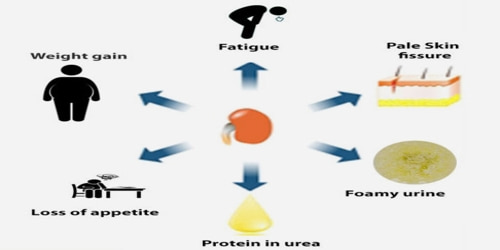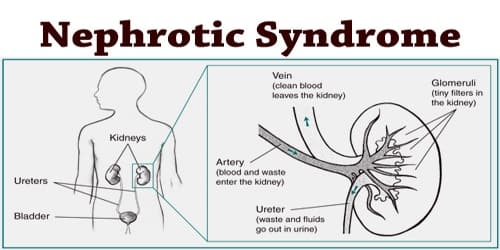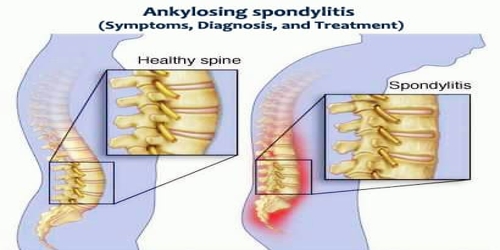Nephrotic Syndrome
Definition: Nephrotic syndrome is a kidney disorder that causes our body to excrete too much protein in our urine. Small blood vessels in our kidneys function as a filter, clearing out waste and extra water from our blood. That waste and water ends up in our bladder and leaves our body as urine. These vessels are part of what’s called “glomeruli,” the filtering part of our kidney.
Nephrotic syndrome causes swelling (edema), particularly in our feet and ankles, and increases the risk of other health problems. Other symptoms may include weight gain, feeling tired, and foamy urine. Complications may include blood clots, infections, and high blood pressure.
Everyone needs protein to live. There are many kinds of protein and our body uses protein in many ways, including building bones, muscles and other tissues, and fighting infections. When our kidneys aren’t working well, they let a protein called albumin to get through their filters into our urine. Albumin helps our body get rid of extra fluid. When we don’t have enough albumin in our blood, fluid can build up in our body, causing swelling in our legs, feet, and ankles.
Nephrotic syndrome can affect both adults and children. Diagnosis is typically based on urine testing and sometimes a kidney biopsy. It differs from the nephrotic syndrome in that there are no red blood cells in the urine.
Treatment is directed at the underlying cause. Other efforts include managing high blood pressure, high blood cholesterol, and infection risk. A low salt diet and limiting fluids are often recommended. About 5 per 100,000 people are affected per year. The usual underlying cause varies between children and adults.

Causes Sign, and Symptom of Nephrotic Syndrome: Nephrotic syndrome has many causes and may either be the result of a glomerular disease that can be either limited to the kidney, called primary nephrotic syndrome (primary glomerulonephritis), or a condition that affects the kidney and other parts of the body, called secondary nephrotic syndrome.
Nephrotic syndrome makes our body lose protein through our urine. Proteins do many jobs in our body. When we don’t have enough protein in our blood, our body can start to have other problems, such as blood clots and infections. Other complications that can be caused by nephrotic syndrome include:
- Anemia
- Heart disease
- High blood pressure
- Fluid Buildup
- Acute kidney injury
- Kidney failure /ESRD
Diabetes, which is the most common secondary cause of nephrotic syndrome in adults. It can cause kidney damage, known as diabetic nephropathy.
Nephrotic syndrome is characterized by large amounts of proteinuria (>3.5 g per 1.73 m2 body surface area per day, or > 40 mg per square meter body surface area per hour in children), hypoalbuminemia (<2,5 g/dl), hyperlipidemia, and edema that begins in the face. Hyponatremia also occurs with a low fractional sodium excretion.
Signs and symptoms of nephrotic syndrome include:
- Severe swelling (edema), particularly around the patient’s eyes and in their ankles and feet
- Foamy urine, which may be caused by excess protein in the patient’s urine
- Weight gain due to excess fluid retention
- Fatigue
- Loss of appetite
If people have any of these symptoms or if they have blood tests that show their cholesterol and triglyceride levels are too high, talk to their healthcare provider (doctor, nurse practitioner or physician assistant) about checking their kidney health.

Diagnosis and Treatment of Nephrotic syndrome: Along with obtaining a complete medical history, a series of biochemical tests are required in order to arrive at an accurate diagnosis that verifies the presence of the illness. In addition, imaging of the kidneys (for structure and presence of two kidneys) is sometimes carried out, and/or a biopsy of the kidneys.
Tests and procedures used to diagnose nephrotic syndrome include:
- Urine tests. A urinalysis can reveal abnormalities in the patient’s urine, such as large amounts of protein if they have nephrotic syndrome.
- Blood tests. If patients have nephrotic syndrome, a blood test may show low levels of the protein albumin (hypoalbuminemia) specifically and often decreased levels of blood protein overall. Serum creatinine and blood urea also may be measured to assess their overall kidney function.
- Removing a sample of kidney tissue for testing. The doctor may recommend a procedure called a kidney biopsy to remove a small sample of kidney tissue for testing. Kidney tissue is collected and sent to a lab for testing.
Further investigations are indicated if the cause is not clear including analysis of auto-immune markers (ANA, ASOT, C3, cryoglobulins, serum electrophoresis), or ultrasound of the whole abdomen.
There is no cure for nephrotic syndrome, but there are treatments that can help people manage symptoms and prevent more kidney damage. If their kidneys stop working, they will need dialysis or a kidney transplant to live.
Drugs called angiotensin-converting enzyme (ACE) inhibitors reduce blood pressure and also reduce the amount of protein released in urine. Medications in this category include benazepril (Lotensin), captopril and enalapril (Vasotec). Diuretic medications typically include furosemide (Lasix). Others may include spironolactone (Aldactone) and thiazides, such as hydrochlorothiazide. Anticoagulants include heparin, warfarin (Coumadin, Jantoven), dabigatran (Pradaxa), apixaban (Eliquis) and rivaroxaban (Xarelto).
Medications to control the immune system, such as corticosteroids, may decrease the inflammation that accompanies underlying conditions, such as minimal change disease, lupus, and amyloidosis.
Information Source:
















